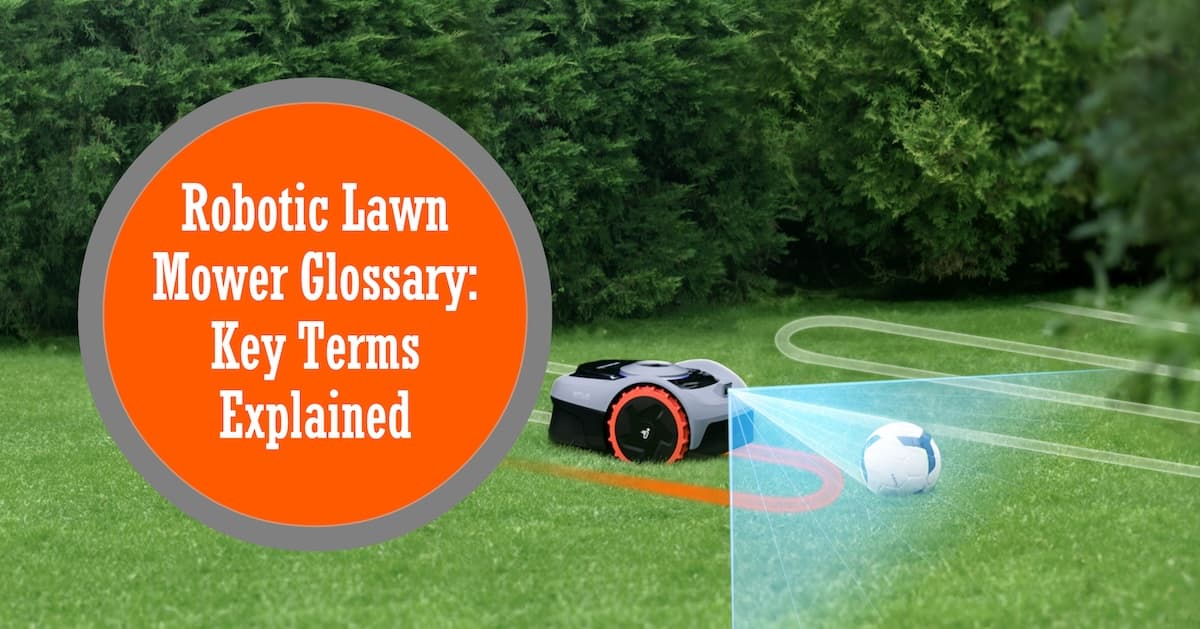Models+

Which mower is right for me?
Find out nowYour Basket


As robotic lawn mowers continue to grow in popularity across the UK, so too does the technology that powers them. From satellite-guided navigation systems to smart app connectivity, today’s robotic mowers are a far cry from their early predecessors. For homeowners and garden enthusiasts alike, understanding the terminology used in this rapidly evolving space can make all the difference when choosing or operating a mower.
This glossary provides clear, concise definitions of the most important terms and features you’ll encounter — with a special focus on smart, wire-free solutions like the Segway Navimow range.
AI-Powered Mapping
Uses artificial intelligence to generate and optimise efficient mowing paths and area coverage.
RTK (Real-Time Kinematic)
Satellite-based positioning system that provides centimetre-level accuracy for wire-free navigation.
GNSS (Global Navigation Satellite System)
An umbrella term for satellite positioning technologies, including GPS, GLONASS, Galileo, etc.
GPS (Global Positioning System)
A specific GNSS used widely for navigation and lawn mapping.
SLAM (Simultaneous Localisation and Mapping)
Allows the mower to map its environment while determining its own position in real time.
VIO (Visual Inertial Odometry)
A vision and motion sensor-based navigation technique used when satellite signal is weak.
Odometry
Estimates movement and distance using wheel or motion sensors.
EFLS (Exact Fusion Locating System)
Navimow’s proprietary system that combines GNSS and vision data for highly accurate mowing.
Reference Station/Base Station
A fixed point used to correct GNSS signals, improving mower positioning in RTK-based systems.
Cutting Height
The adjustable range of grass height the mower can achieve.
Cutting Width
The span of grass the mower can cut in a single pass.
Blade Type
The design of cutting blades, such as rotating, pivoting or fixed.
Cutting Motor Type
The type of motor driving the blade; brushless motors are quieter and longer-lasting.
Mowing Patterns
The method by which the mower navigates and cuts (e.g., systematic, random, edge-first).
Cut-to-Charge Ratio
A performance indicator showing how much mowing is achieved relative to charging time.
Edge Cutting / Edge Mode
A mode designed to neatly trim lawn edges along fences or walls.
Mulching / Cut & Drop
The mower finely shreds grass and drops clippings back on the lawn to fertilise it naturally.
Battery Capacity
The energy storage of the battery, typically measured in ampere-hours (Ah).
Charging Time
How long it takes the mower to fully recharge.
Mowing Time / Runtime
The total duration the mower can operate on a single charge.
Service Life (Battery)
The lifespan of the battery before noticeable performance decline.
Docking Station / Charging Station
The base unit where the mower returns to automatically recharge.
IP66
A protection rating indicating the mower is dust-tight and resistant to powerful water jets.
Max. Slope
The steepest incline the mower can operate on, usually expressed as a percentage.
Rain Sensor
Detects rain and automatically pauses mowing to protect the mower and the lawn.
Incline Compensation / Terrain Adaption
Allows the mower to adjust operation based on slopes or uneven surfaces.
App Control
Allows the user to control the mower via a smartphone app for scheduling and settings.
IOT Connectivity
Internet of Things support including Bluetooth, Wi-Fi, and 4G mobile network access.
Virtual Boundary
Digitally-defined mowing area set via satellite positioning or app, replacing perimeter wires.
OTA (Over-the-Air) Updates
Wireless firmware updates that improve performance or add new features.
Zone Scheduling / Multi-Zone Support
Ability to define and schedule mowing for multiple lawn areas separately.
Cloud Sync
Stores settings and mowing history in the cloud for easy recovery and sync.
Voice Control Integration
Connects with smart home assistants like Amazon Alexa or Google Assistant.
Obstacle Avoidance
Uses sensors or cameras to detect and avoid objects in the mower’s path.
Lift Sensor
Automatically stops the blades when the mower is lifted.
Tilt Sensor
Triggers safety shut-off if the mower tilts or flips over.
Bumper Sensor
Detects contact with physical objects to trigger direction change or pause.
Blade Stop Time
The time it takes for the blades to stop spinning after an emergency stop or interruption.
Emergency Stop Button
A physical button that stops the mower immediately when pressed.
PIN Code / Security PIN
A digital code used to restrict unauthorised access to the mower.
Anti-Theft Features
Security mechanisms like PIN codes, alarms, and GPS tracking to deter theft.
Display / Interface
The onboard screen or control panel for user commands and status info.
Firmware
The internal software system that controls the mower’s behaviour, updated via OTA.
Boundary Re-Mapping / Area Reconfiguration
The ability to easily update or redraw the mowing area if the lawn layout changes.
We hope this glossary has helped you better understand the terminology behind robotic lawn mowers. Whether you’re comparing models, shopping for your first wire-free mower, or looking to get the most out of your current setup, understanding these terms can make your journey smoother and smarter.
To see the latest range of Segway Navimow robotic mowers — and to experience cutting-edge technology in your own garden — visit uknavimow.com today.